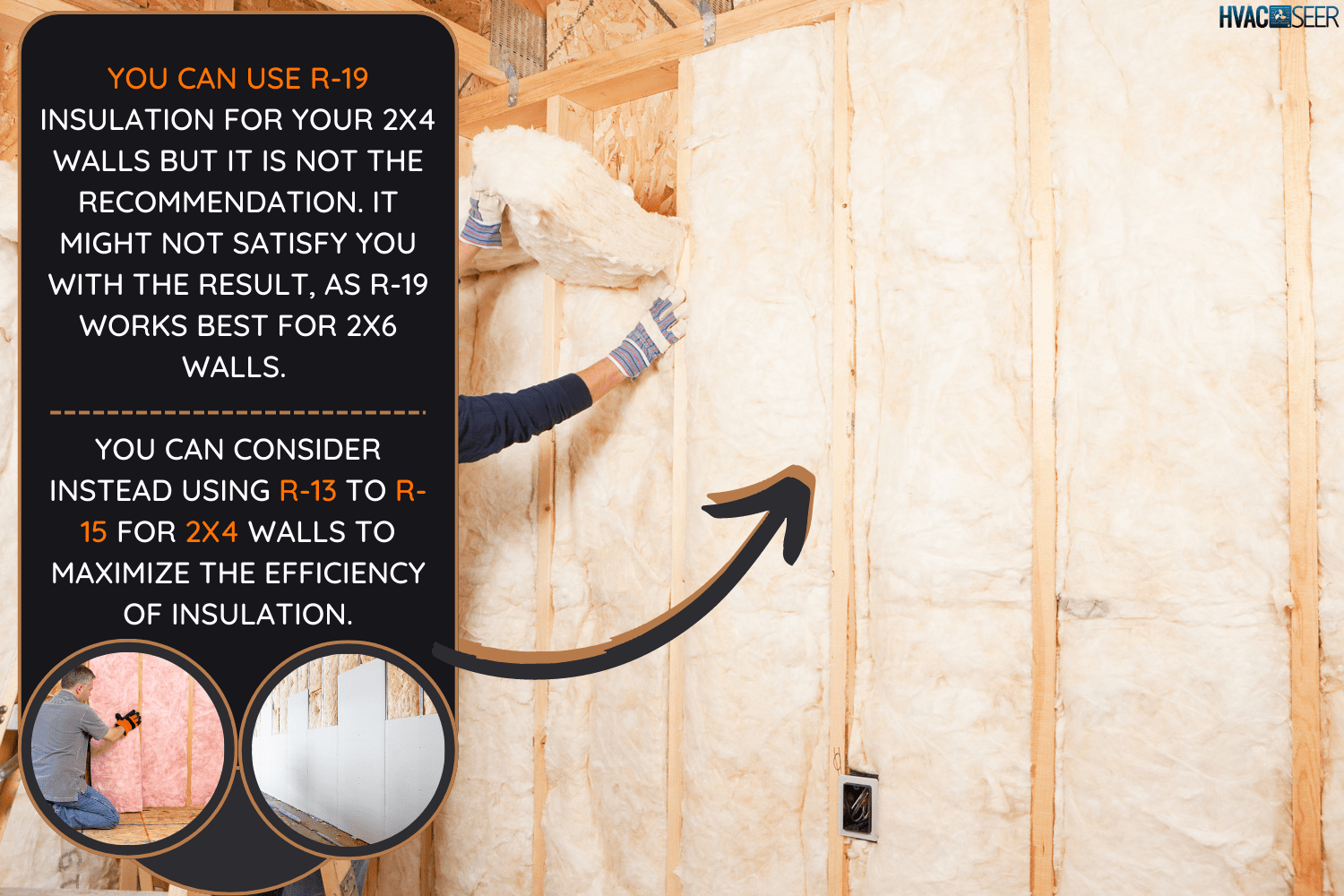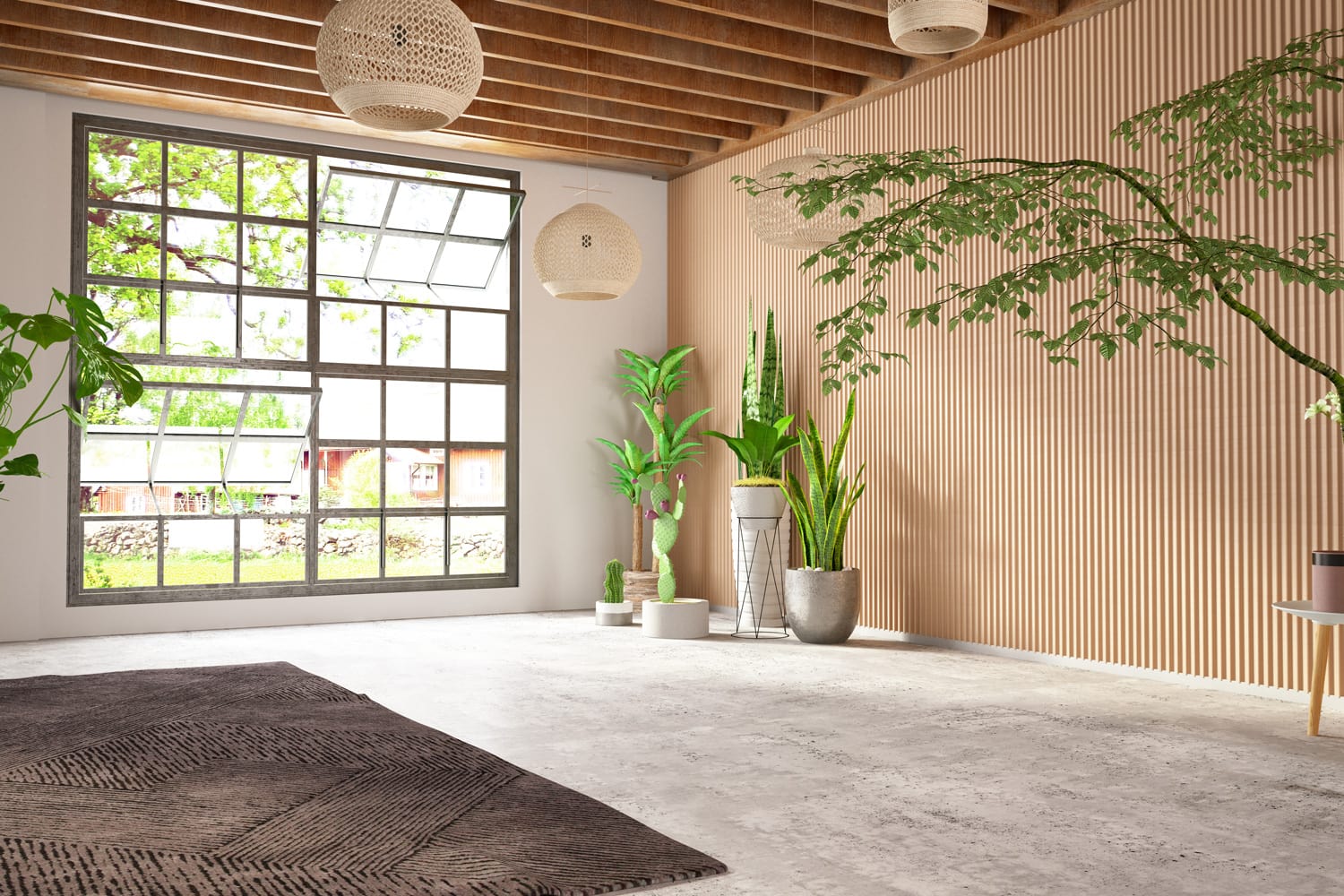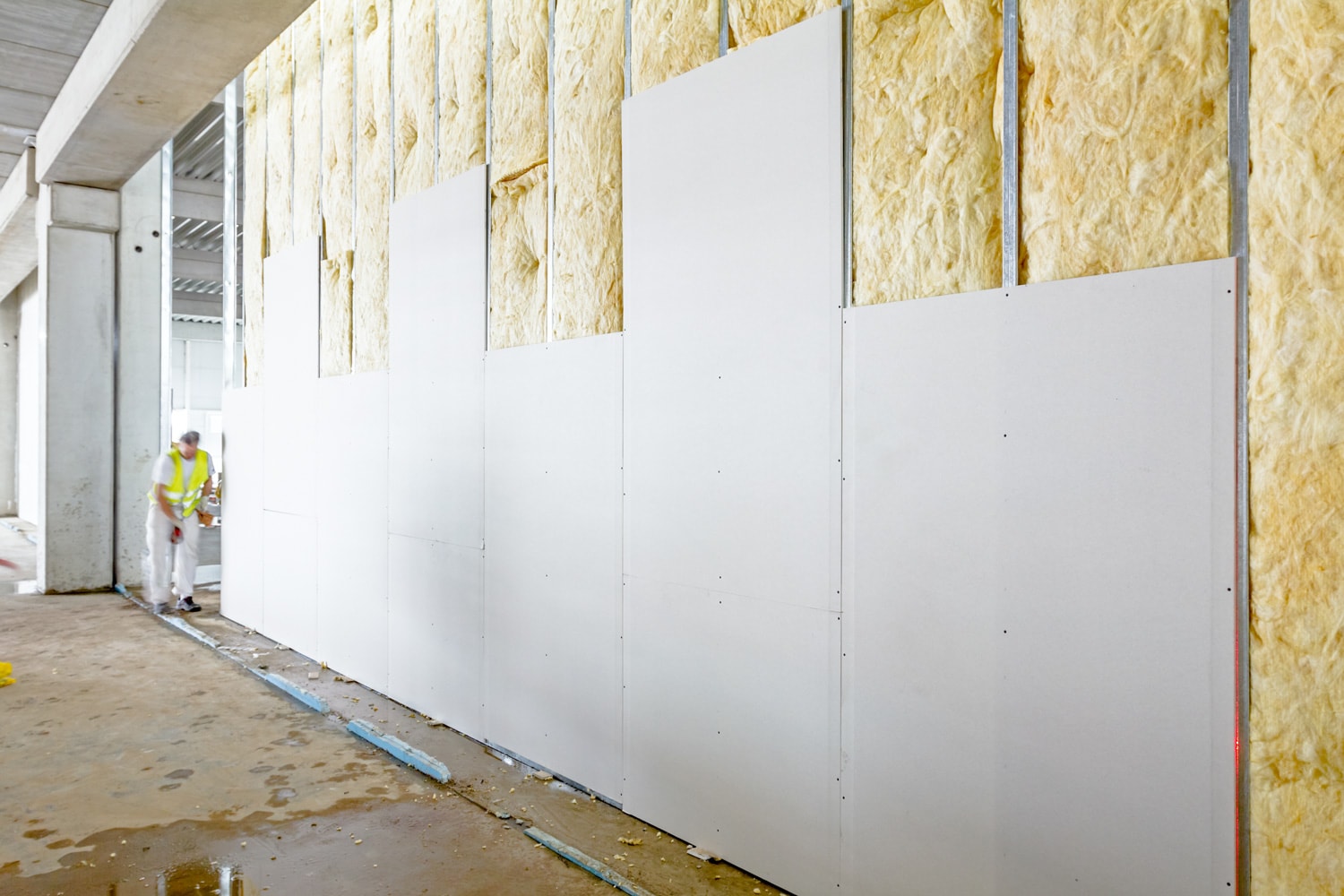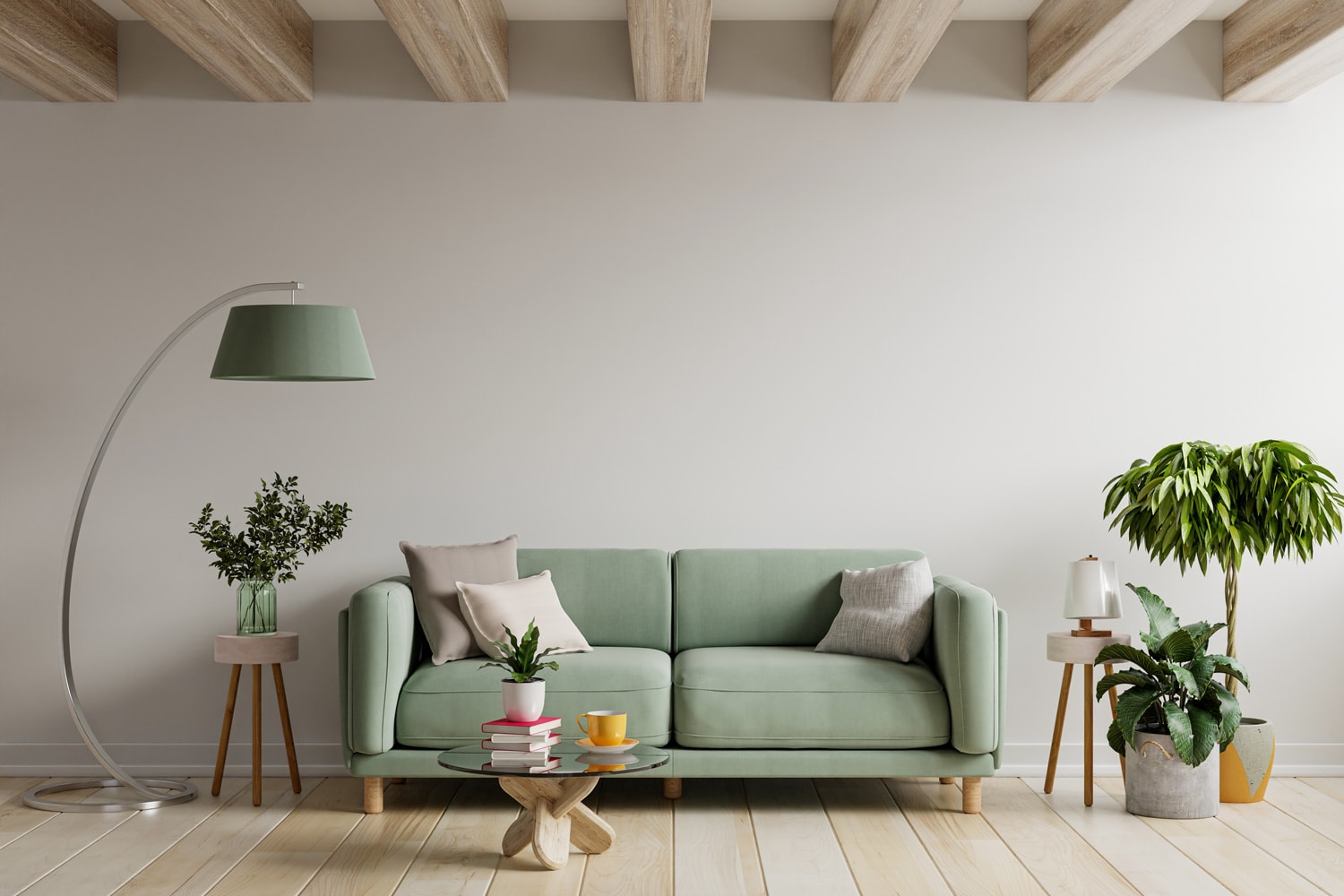Are you wondering if you can use R-19 insulation for 2x4 walls? Don't worry! We did comprehensive research to answer your question.
You can use R-19 insulation for your 2x4 walls but it is not the recommendation. It might not satisfy you with the result, as R-19 works best for 2x6 walls. You can consider instead using R-13 to R-15 for 2x4 walls to maximize the efficiency of insulation.
By the end of this article, you'll learn what an R-19 is and if it's good to use on 2x4 walls. We'll give you a breakdown of things to consider. We're thrilled to share what we've discovered. Let's read up to the end!
Can You Use R-19 in a 2x4 walls?

Insulation refers to a material that acts as a layer, blocking the transmission of heat, electricity, moisture, sound, and shockwaves between two adjacent surfaces. Insulation is used on building structures such as walls and floors to isolate the room temperature.
On the other hand, the R-value assigned pertains to the insulation's heat resistance. A higher R-value means better thermal performance. Also, R-value is a building code standard in most U.S. states, depending on location and heat index.
A 2x4 wall is sized for an insulation rating of R-13 to R-15, but not R-19. Therefore, using an R-19 for a 2x4 may not give you the optimal insulating performance. The R-19 is good for a 2x6 wall. Otherwise, your house could become colder in the winter and hotter in the summer.
Can You Increase the R-Value?
It's not about the insulation's thickness. Rather, adding more insulation to your home can increase the R-value. Overlapping layers of insulation doesn't mean a higher R-value, as the insulation itself will compress in its own space. You can ask the local authority what R-value is suggested in your area.
Does a Wooden Wall Have an R-Value?

Wooden walls tend to have an R-value ranging around 1.41 per inch for softwoods and 0.71 per inch for hardwoods. It means that adding effective insulation can assist in achieving the desired R-value.
However, such a range will vary based on wood quality and type. You'll want to get updates from the local weather forecast, as the temperature in your city may change from time to time so you'll want sufficient knowledge of the temperature ranges the wood can insulate against.
What Insulation Should You Use on 2x4 Walls?
Practically, you should use kraft-faced fiberglass insulation for 2x4 walls. It has a paper vapor retarder that prevents mold growth and moisture buildup.
See this fiberglass insulation on Amazon.
This is good to use for exterior walls, attic ceilings, and areas with high humidity levels, such as basements. Its paper side should be facing towards you.
On the other hand, unfaced fiberglass insulation doesn't have a paper side. It is used for interior walls that do not face outside the house. It is a non-combustible material that's good for resisting fire.
How to Insulate a 2x4 Wall
It's good to have a professional assist you in insulating the wall. However, you can refer to the steps below:
- Prepare the area. Remove the furniture and any obstructions in place.
- Wear a mask and gloves for protection.
- Measure the insulation's thickness. Consider at least 3.5 inches for a 2x4 wall.
- Cut the insulation roll with a utility knife. You can leave an excess length as it's easier to cut than to add insulation.
- Fill the 2x4 wall with the cut insulation. Do not overly compress the insulation as it can reduce effectiveness. You can also refer to the product instructions.
- Run the knife along the wall's edges to trim the insulation.
- Carefully cut the insulation to cover the wires while exposing the electrical outlets.
- Put the insulation at the back of the plumbing pipes to protect them from freezing.
- Apply a sealant to the tip plate, then tack the sheet every 12–24 inches.
- Staple the insulation every eight inches to hold the fiberglass in place.
Do You Need a Vapor or Radiant Barrier?
A barrier is an additional protective layer you put on top of the insulation. It's important to understand what barrier you need between the two. See below their differences.
Vapor Barrier
A vapor barrier is typically made of plastic, which is used to keep room temperature stable. It's installed to block moisture and eliminate humidity in the area.
See this vapor barrier on Amazon.
However, you should consider the location and climate to determine whether you should install the vapor barrier on the exterior or interior of the insulation.
Radiant Barrier
On the other hand, radiant barriers are common in attics. It deflects the sunlight to prevent it from further heating the home.
See this radiant barrier on Amazon.
The roof already absorbs a lot of heat during the daytime. So, installing a radiant barrier will reduce such heat, which can also improve the attic's air temperature.
Judging from the explanations above, you'll most likely need a vapor barrier for 2x4 walls. Keep in mind that it can vary depending on your contractor's assessment.
What Comes After Insulating Walls?

The final step to insulation is covering it with drywall, although it depends on the construction plan of your house. Drywall is made of plaster or gypsum and is used as protection against fire as well as to support the house's foundation.
Some homeowners use drywall as their primary wall, while others prefer to have an additional finishing method such as painting. You should talk with your home builder about the next steps.
Can You Insulate Closed Walls?

It's still possible to insulate a closed wall. However, the insulation technique is quite limited to spray foam or loose-fill since the space is closed already. Otherwise, you need to open and detach the wall if you prefer installing a roll of insulation.
It's not to discourage you from insulating a closed wall, but you should understand the disadvantages of doing so. Consider the factors below.
Inaccurate R-Value
Insulating a closed wall might result in an inaccurate R-value, simply because you cannot fill in the wall cavities if you cannot see them. This can result in ineffective insulation if you do not achieve the recommended thickness.
Air Leaks
If the insulation cannot cover the cavities, air will occupy empty spaces within the wall. Later on, such a space will be a breeding ground for moisture and will trigger mold growth. Also, air leaks can make the wall weak due to insufficient support from impact and movements.
Uncontrolled Amount of Insulation
Since you can't see how large the space is within the closed wall, it's either you fill it with too much or too little insulation. This can result in bigger problems like sagging and uneven wall surfaces.
Expanding Insulation
The spray foam could expand too widely, pushing the wires until they protrude. This can constrict the wires, which may lead to an electrical hazard. That's why it's important that you see the space you're insulating to avoid this from happening.
How Long Before Replacing Wall Insulation?

Typically, insulation can last for 15-20 years. Replacing insulation can be a major task, as you need to reassess the walls before you proceed to install a new one. You can check below for some signs you need to replace insulation. These things can also happen when you use the wrong R-value.
Ineffective Room Temperature
You might notice the room temperature continuously fluctuating between cold and hot temperatures. It's a sign that the insulation isn't effective anymore. You would want to recall how long it has been since you first insulated the walls. This will help you determine if you need a replacement.
Increased Electric Bill
Since the heater is ineffective, the electric bill can go higher than usual. If you have an HVAC unit such as an air conditioner or an electric furnace, you'll see that they're running for hours yet the temperature doesn't change. This will waste too much energy, resulting in higher electricity consumption.
Heavy Condensation
Insulation is supposed to trap moisture and reduce the humidity level in an area. So, a poorly insulated wall can show signs of heavy condensation when the moisture penetrates through it. It's a strong sign that there's something wrong with the insulation, which can lead to replacement.
Conclusion
We're so glad you joined us up to this point in the article, in which we learned that it's important to use an appropriate R-value for insulating 2x4 walls. Keep in mind that in the long run, R-value can affect the walls either for good or bad.
Do you want to know more about us? We know you'll love these articles:



